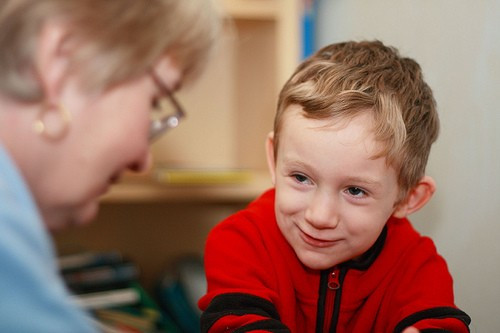Autistic Children May Have Too Many Brain Cells, Heavier Brains, Study Says

Children with autism have larger than average brains and too many cells in a key part of the brain, according to a new study.
The new research suggests that autism could be triggered in the womb and not something which appears in a child when they are a toddler.
The small preliminary study by U.S. researchers suggests that children with autism may have too many brain cells in the area of the brain which is needed for communication and emotional development.
The study found that autistic children had 79 per cent more neurons in the dorsolateral prefrontal cortex and 29 per cent more in the mesial prefrontal cortex than children who weren't autistic. Brain cells in these areas are known to develop during pregnancy, specifically between 10 and 20 weeks, which suggests autism originates in the womb.
The research examined the brains of seven autistic boys and six without who had died between the ages of two and 16.
A typical developing child will have around 1.16 billion neurons in the prefrontal cortex, meaning that autistic children have about 1.94 billion.
The study could mean that environmental factors such as vaccinations will be less likely, if at all, to be responsible for implicating autism.
"For the first time, we have the potential to understand why autism gets started," said study author Eric Courchesne, a professor of neurosciences at the University of California, San Diego School of Medicine and director of the Autism Center of Excellence.
"Creating brains cells and the correct number of brain cells is absolutely fundamental to building the brain. If there is an excess number of neurons, there must be a negative consequence to that in the way the brain gets wired or organized."
"When we think of the inability to handle complicated information, we usually think of too little in the way of connections or brain cells," says Courchesne. "But this is just the opposite."
Some children with autism do have overly large heads, but this new study also show that the brains of children with autism may also weight more than those without.
"If their brain is too large, there may be too many brain cells. And now we know that the area that shows overgrowth is the prefrontal cortex and this very important for higher-order functions," Courchesne says.
Currently around one child out of 150 born in the U.S. is diagnosed with autism, roughly around one per cent.
The study is published in the Nov. 9 issue of the Journal of the American Medical Association.
© Copyright IBTimes 2025. All rights reserved.






















